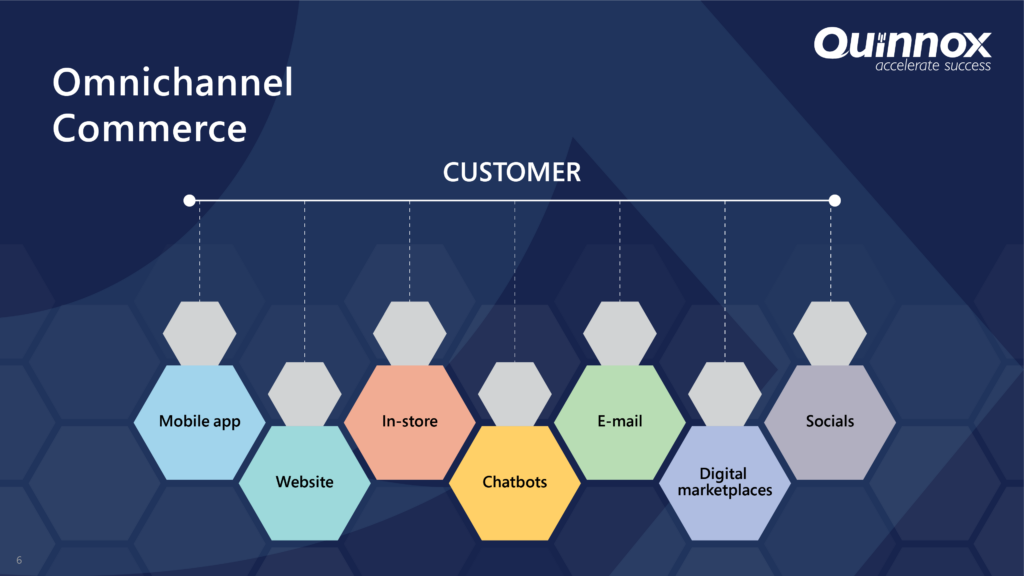From data analytics to automation tools, technology plays a pivotal role in shaping the success of retailers as they navigate the complexities of omnichannel commerce. By harnessing the power of technology to integrate data, personalize experiences, streamline operations, ensure security, and drive engagement, retailers can create a compelling, unified shopping experience that resonates with today’s digitally savvy consumers.
Let’s delve into the key ways technology powers integrated e-commerce platforms to help retailers easily tackle the challenges of siloed systems that restricts them from delivering seamless experiences across channels:
1. Data Integration and Analysis:
Customer Insights: Technology enables retailers to gather, consolidate, and analyze vast amounts of customer data from various touchpoints. By aggregating data on shopping behavior, preferences, and interactions, retailers can gain valuable insights to personalize marketing efforts and enhance the overall customer experience.
Predictive Analytics: Advanced analytics tools powered by artificial intelligence (AI) and machine learning algorithms enable retailers to predict customer trends, identify patterns, and optimize recommendations. By leveraging predictive analytics, retailers can anticipate customer needs, optimize inventory management, and drive targeted marketing campaigns.
2. Multi-channel Integration:
Omni-channel Capabilities: Technology facilitates the integration of multiple sales channels, including websites, mobile apps, social media platforms, and physical stores. By connecting these channels seamlessly, retailers can provide a cohesive shopping experience that allows customers to engage with the brand across various touchpoints effortlessly.
Real-time Inventory Management: Integrated e-commerce platforms leverage technology to sync inventory data across channels in real-time. This ensures accurate stock levels, prevents out-of-stock situations, and enables customers to access up-to-date product availability information, improving transparency and customer satisfaction.
3. Personalization and Customer Engagement:
AI-driven Personalization: Technology enables retailers to deliver personalized experiences through AI-driven recommendation engines. By analyzing customer data in real-time, retailers can tailor product recommendations, promotions, and content based on individual preferences, increasing relevance and driving conversions.
Chatbots and Virtual Assistants: Automated chatbots and virtual assistants powered by natural language processing (NLP) technology enhance customer support and engagement. By providing instant responses to customer inquiries, guiding purchase decisions, and offering personalized assistance, retailers can improve customer satisfaction and streamline the shopping experience.
4. Security and Trust:
Secure Payment Gateways: Technology plays a crucial role in ensuring secure transactions through encrypted payment gateways, fraud detection systems, and compliance with industry standards. By prioritizing data security and privacy, retailers can build trust with customers, safeguard sensitive information, and mitigate risks associated with online transactions.
5. Scalability and Flexibility:
Cloud Computing: Cloud-based solutions offer scalability, flexibility, and cost-efficiency for retailers looking to expand their e-commerce operations. By leveraging cloud computing infrastructure, retailers can adapt to changing demands, scale resources as needed, and deploy updates seamlessly, ensuring agility and responsiveness in a competitive market.


